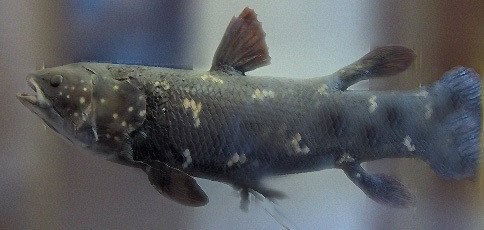
Vertebrate animals are those that have a backbone or vertebral column. This group includes mammals, birds, reptiles, amphibians and fish. Of course, vertebrate animals include us humans.
Until recently, it was considered that only vertebrates choanates (that is, those who are equipped with posterior nostrils – “choanae” – and, therefore, breathe through their noses) were capable of making sounds to communicate. However, some animals choanateslike turtles, historically considered “dumb” by the scientific community, remained on the sidelines.
A recent study, whose conclusions appeared at the end of 2022, shows that some beings who were believed to be incapable of communicating by emitting sounds actually do so on a regular basis. Let’s see it next, addressing the issue of the origin of vocal communication throughout the evolution of species.
Origins of vocal communication: a common ancestor?
The accepted theory of the origins of acoustic communication consisted of parallel evolution in different clades or groups. However, the recent study, published in the journal Nature Communications (see bibliography), points to a different hypothesis: that all animals capable of communicating through sounds come from a common ancestor. This animal was the first to present the necessary phonetic skills and lived about 407 million years ago, in the Paleozoic era: an animal related to the current lobe-finned fish, belonging to the sarcopterygian family.

This family includes the current lungfish, a type of fish that has both gill and lung respiration, an adaptation developed to survive when the water level drops. Lungfish are key when it comes to understanding the evolution of species, since they represent the link that united aquatic animals with terrestrial animals in the passage of life from the sea to the land.
Until the publication of the study’s conclusions, lungfish, as well as other species, were considered incapable of making sounds, despite being vertebrate animals. However, the study of the Nature Communications sheds new light on this issue.
Turtles and fish also communicate through sounds
Phylogenetic analyzes are a type of studies that allow us to analyze the evolution of a species and its relationship with others. Thanks to phylogenetics, it has been possible to design the evolutionary tree of acoustic communication, which until now did not include species considered incapable of emitting sounds.
The team responsible for the study published in the Nature Communications managed to record the sounds produced by 53 species of different groups of vertebrates considered “dumb” until then: lungfish, turtles, caecilians (worm-like amphibians) and tuatara (a reptile from New Zealand). These species are vertebrates choanatesthat is, they have nostrils, so it seemed likely that they were capable of making sounds like the rest.
Thanks to the recordings, it was discovered that, indeed, these animals They are capable of emitting complex and varied sounds to communicate with each other, which differ depending on the situations: attracting a mate, defending its territory, and even as a communication system between parents and offspring. Through the study, it was proven that baby turtles emit sounds inside the egg to synchronize hatching and thus be able to avoid the dangers of leaving the nest alone.
Sounds are not emitted only with air
The emission of sounds is, therefore, crucial for the development and survival of vertebrate animals, and represents an important degree of sophistication in evolution, since it allows them to communicate with their peers.
The importance of communication through sounds to ensure survival is evident in that Not only vertebrates with choana communicate in this way, but also other types of fish According to Gabriel Jorgewich, from the University of Zurich and one of the authors of the article, they would do so through other types of evolutionary characteristics that, due to their nature, do not fall within the study.
The use of sounds seems obvious in species that have lung respiration and that inhale oxygen through the choanae or nasal passages, but not so much in species that do not have this type of respiration. However, recent studies show that this type of fish communicates through sounds in a quite complex way.
Aaron Rice and Andrew Bass of Cornell University are two of the scientists studying the phenomenon. Both assure that, contrary to what we believe, non-lung fish are capable of communicating in water. However, how to make sounds without air intake? Well, through alternative methods, such as teeth grinding and contraction of the swim bladder muscles, which proves, once again, the importance of acoustic communication for the survival of species
The importance of the discovery
According to Gabriel Jorgewich Cohen, the study will facilitate the understanding of the evolutionary line of vocal communication, in addition to opening our sights to species that, until now, were not considered capable of emitting sounds.
The new records obtained facilitate the expansion of the design of the evolutionary tree of acoustic communication and allow, in this way, to consolidate the theory of a common ancestor, the first to communicate with his peers through sounds.








